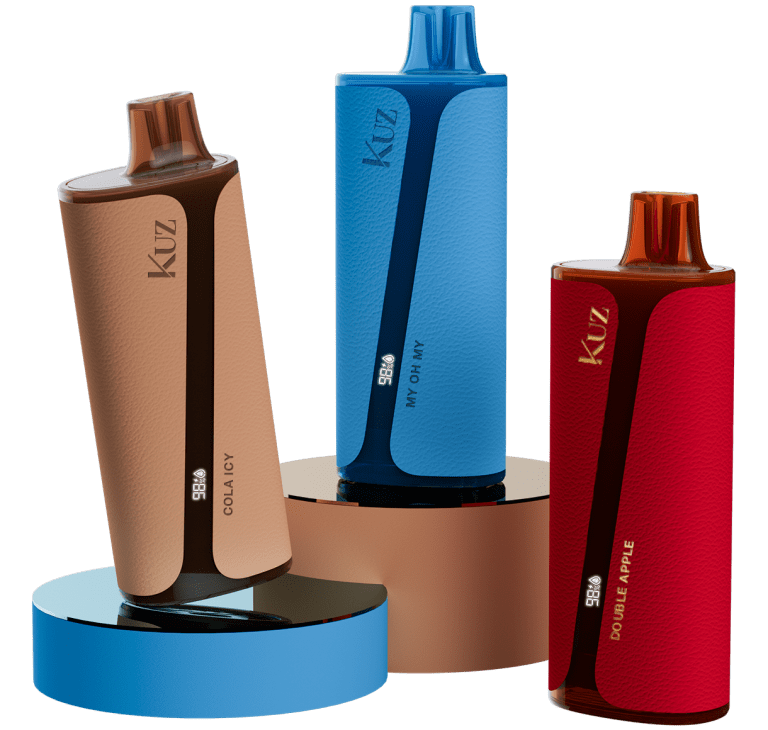Vaping has gained popularity as a modern alternative to smoking, but one lingering question remains: how long does vape smoke stay in the air? The answer depends on various factors such as the type of device used, the environment, and airflow. Understanding these variables can help vapers make informed decisions about where and how to vape, especially in shared spaces.
The Basics of Vape Smoke Dissipation
Vape smoke, or vapor, typically lingers in the air for a much shorter duration than traditional cigarette smoke. While cigarette smoke can stay airborne for up to 45 minutes, vape clouds usually dissipate within a few minutes to a couple of hours, depending on the environment. The rapid dissipation of vape smoke is due to the larger, heavier particles that settle more quickly, especially in well-ventilated areas.
Key Factors Affecting Vape Smoke Longevity
Several elements contribute to how long vape smoke stays in the air, with the most significant being the density of the vapor, room ventilation, humidity, and temperature. Let’s break down each factor:
- Vapor Density: The thickness of the vape cloud is influenced by your device’s settings, the type of e-liquid used, and your inhalation technique. Higher wattage and e-liquids rich in vegetable glycerin (VG) tend to produce denser clouds, which linger longer. For a more discreet experience, e-liquids with a higher propylene glycol (PG) content create thinner clouds that dissipate faster.
- Ventilation: Proper airflow is essential in reducing the time vapor stays suspended in the air. Well-ventilated rooms with open windows or fans can disperse vape smoke much quicker than enclosed, poorly ventilated spaces. For those vaping indoors, investing in an air purifier with a HEPA filter can further expedite the removal of vapor particles from the air.
- Humidity Levels: High humidity can accelerate the dissipation of vape clouds as the moisture in the air helps condense and remove the vapor. Conversely, in dry environments, vape smoke tends to linger longer. Therefore, vaping in humid areas or after a hot shower might result in faster dispersion of vape clouds.
- Temperature: Warmer air facilitates quicker vapor dissipation since heat causes the particles to rise and disperse. On colder days or in cooler environments, vape smoke can stick around for longer as the particles are trapped in lower air layers.
How Vape Smoke Compares to Cigarette Smoke
One of the most important distinctions between vape smoke and cigarette smoke is the duration each remains in the air. Cigarette smoke is notorious for lingering for extended periods, sometimes even days, and its sticky particles tend to cling to surfaces, fabrics, and walls. Vape smoke, however, disperses much faster and is less likely to leave lasting odors or residues, making it a more favorable option for indoor use.
That being said, vape smoke isn’t entirely harmless. While it doesn’t contain tar or many of the toxic chemicals found in cigarette smoke, secondhand vapor still poses risks, especially for those with respiratory conditions, children, and pregnant women.
Tips to Minimize Vape Smoke Indoors
For those who vape indoors but want to minimize the impact of vapor on their surroundings, here are a few practical tips:
- Vape Outdoors: If possible, vaping outside ensures that the vapor dissipates quickly in open air, reducing its impact on indoor spaces.
- Use Air Purifiers: Air purifiers equipped with HEPA filters can effectively trap vape particles, improving indoor air quality and reducing lingering vapor.
- Stealth Vaping: This technique involves taking shorter, shallow puffs and holding the vapor in your lungs longer before exhaling. This reduces the amount of visible vapor and helps it dissipate more quickly.
Final Thoughts
The duration that vape smoke stays in the air is influenced by several controllable factors, including device settings, ventilation, and environmental conditions. In most cases, vape clouds clear out within minutes, making them less intrusive than cigarette smoke. However, it’s essential to be mindful of your surroundings, especially when vaping indoors, to ensure you minimize the impact on air quality and the health of others around you.
Understanding how vape smoke behaves in the air can help both vapers and non-vapers make informed decisions about vaping in shared environments. By following the best practices mentioned above, you can enjoy vaping while reducing its environmental footprint.



